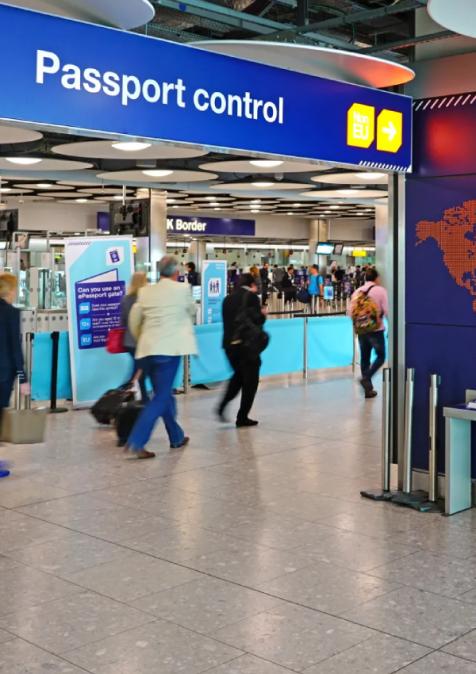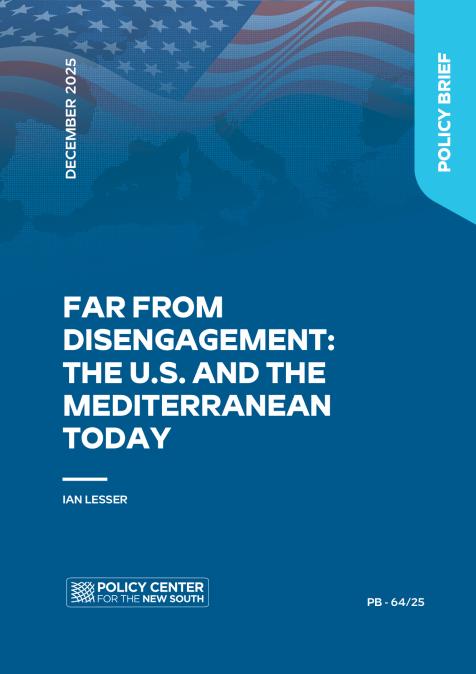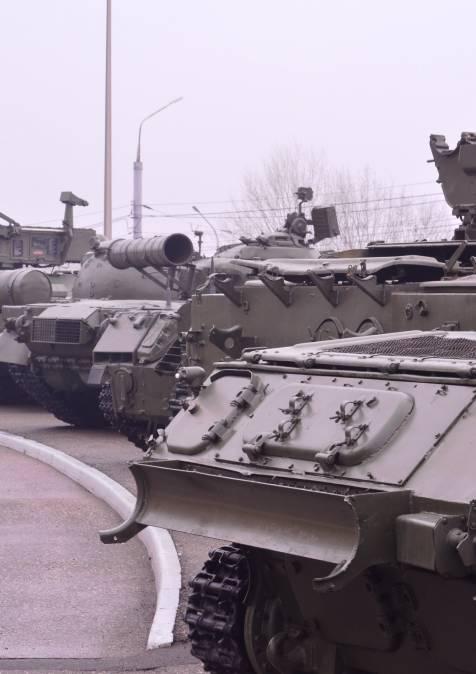Publications /
Opinion
This brief was originally published in gmfus.org
The EU is increasing, at home and abroad, its use of state-of-the-art technologies in its border management. But guarantees of their consistently appropriate use are lacking.
Migration increasingly involves digital tools. Internet, smartphones, and social media are of paramount importance for people on the move. Border management is also becoming more digitalized, with technological tools being used to accelerate legal international crossings and reduce illegal migration. The EU has been active in this area by introducing technology to gather information, surveil, and manage large databases, and by supporting non-EU countries to do the same. These developments are not without controversy. They allow for more efficient and accurate border controls but can also be harmful and infringe on individual freedoms and rights.
Technology’s Increasing Role
Following terrorist attacks in Spain and France in the early 2000s, the EU began pushing for new border technologies to confront terrorist infiltration while making asylum and migration procedures more secure through the collection of personal data. Since then, technologies such as e-gates, automated security checks, software for risk assessment of travellers, and biometric identifiers are becoming an essential part of EU border monitoring. This digitalization process involves all dimensions of border management, from surveillance to data collection and analysis.
The European Border Control System (EUROSUR), for example, one of the first digital infrastructures built in the EU, focuses on surveillance. Established in 2013, EUROSUR constitutes a framework of information exchange using drones, unmanned vessels, and satellites to monitor borders to prevent cross-border crimes and irregular migration. Large-scale IT systems are also a key resource in the EU’s border management toolbox, albeit one that, unlike EUROSUR, plays a fundamental role after an individual enters the bloc. These systems—comprising several databases (the main three are the Schengen Information System, the Visa Information System, and Eurodac, but more are under construction) store the biographical and biometric information provided by non-EU nationals. In 2017, the European Commission proposed legislation to change how the systems work by establishing an interoperability framework for all existing and future databases relevant to migration and asylum, with the ultimate aim of simplifying search processes for police and border authorities. The EU is also looking into adopting AI technology to improve border control and security. Current AI tools in use focus mostly on forecasting and automated decision-making (see dropdown below). A recent European Commission paper reaffirms the use of such state-of-the-art technologies at the border as a political priority, signalling that they are now cemented into EU border policy.
Forecasting Tools
Forecasting tools can predict patterns of displacement and migration. By collecting big data, a machine learning-based algorithm seeks to anticipate events that may unleash large-scale displacement in select geographic regions and estimate the number of asylum applications that the EU can consequently expect. The European Union Asylum Agency (EUAA) recently presented a new machine-learning system, DynENet, that integrates traditional migration and asylum data (such as the number of border crossings and recognition rates of countries of origin) into data on conflicts and internet searches in potential asylum seekers’ countries of origin. Forecasting tools are also widely used by individual EU member states. According to a survey of the European Migration Network (EMN), 12 out of 22 surveyed member states use forecast methods based on open-source migration data.
Automated decision-making tools usually involve using AI to automate visa and citizenship application processes, but they have also been tested in other areas, such as screening migrants to determine their credibility. Germany’s Federal Office for Migration and Refugees uses them for dialect recognition to verify an individual’s origin. But these tools have yet to be implemented in asylum application processes. The EU tested between 2013 and 2019 emotion recognition tools at its borders, particularly in the framework of the iBorderCtrl project, which aimed to verify the veracity of an individual’s claims. The project combined elements of biometric verification, deception detection, document authentication, and risk assessment, but was suspended after the trial period due to widespread criticism by activists and academics who claimed that the project was potentially discriminatory and based on faulty scientifical assumptions. Research on such tools, however, continues.
The process of digitalization has also impacted externalization, the process by which EU cooperation with countries of origin and transit aims to reduce the number of migrants reaching its borders. Externalization, a major component of EU migration policy, has been ongoing since the early 1990s, with the bloc using the prospect of development funds to coax more international cooperation in reducing migration flows. Digitalization is adding a new layer to this effort. Before 2015, the bloc developed digital capabilities for monitoring its borders primarily through two approaches: with systems such as EUROSUR that deploy surveillance technologies to observe movements toward and across its borders, and with EU-wide databases that collect data on other countries’ nationals. Both approaches were centered on internal aspects of EU migration policy including EU infrastructure and activities on EU territory. The 2015 influx of migrants, however, began a move to deploy digital tools in sub-Saharan Africa and strengthen controls in key origin and transit countries.
Biometric identifiers are a crucial component of this effort, at home and abroad. The EU is working to include such information in databases that were not built to house it while prodding countries outside the bloc to update national civil registers with biometrics-based systems. The EU and its member states have already invested billions of euros in migration management programs to promote good migration governance in these countries. The Emergency Trust Fund for Africa (EUTF) provided €5 billion between 2015 and 2020 for partner countries to address the root causes of irregular migration. Other funds have gone to economic development, border and surveillance equipment, and training security forces, all with the aim of stemming irregular migration. The EU’s own border authorities have also received a boost. Statewatch notes that funds dedicated to border policies nearly doubled in the bloc’s current budget cycle (2021-2027), bolstering surveillance and allowing new technological systems for border monitoring.
The Ulterior Motive
There is another EU rationale for these projects. The bloc hopes that they will provide the ability to identify irregular migrants more effectively, a cornerstone of EU migration policy since 2015. The European Commission under President Ursula von der Leyen has been particularly eager to increase the chronically low number of repatriations, and these projects facilitate the return of those not granted asylum. Biometrics plays a crucial role in this since determining an individual’s true nationality can be the main obstacle in the repatriation process.
One specific effort in this regard has involved EUTF support for the West African Police Information System (WAPIS), a program developed over 10 years, from 2012 to 2022. The aim is to improve the capacity of regional law enforcement authorities to combat transnational organized crime and terrorism through information-sharing and the establishment of a database that stores biometric data. WAPIS was initially used to fight drug trafficking from Latin America through West Africa to Europe. But the EU’s subsequent focus on migration reoriented the system from drugs to combating human smuggling. Data generated by WAPIS is shared with larger international organizations, including Frontex, the EU’s border agency. The data, in accordance with the bloc’s goals, is collected and stored in a manner compatible with EU systems and is the first step, as Statewatch has underlined, in a process that also might involve a Return Case Management System (RCMS). RCMS is an electronic register that facilitates the comparison of biometric and other data held by authorities in the EU and in a suspected origin country and, following confirmation of an individual’s identity, allows EU member states to submit an application for repatriation.
Apart from WAPIS, the EU is also funding national biometric databases in sub-Saharan countries, EU access to which is crucial to the bloc’s migration policy goals. The process for access, however, differs depending on the origin country of interest. In some cases, such as Niger, a recent law allows EU and other foreign authorities, which lack access to national databases, to circumvent that by requesting the authentication of travel or identity documents issued by the country. In the case of Cote d'Ivoire, the EU formally requests access to the national register to identify people of Ivorian nationality.
Still, such requests can raise uncomfortable questions about potential linkages to EU development aid and about many African countries’ lack of a framework for protecting personal data (only 14 of 54 member states have ratified the 2014 African Union convention on Cyber Security and Personal Data Protection). Another source of controversy comes from the infrastructure on which systems such as WAPIS’s and those of many African national databases are based. Private European companies often own this infrastructure, potentially comprising African countries’ digital sovereignty and their citizens’ private data.
Safeguards Needed
The use of technologies in migration and border management will only increase. This can have a positive impact, boosting efficiency and enhancing security, but it is important that deployment is conducted ethically. Technologies can also have significantly negative consequences if abused. They can infringe on human rights and strengthen digital authoritarianism. By equipping and training authorities elsewhere with tools such as large biometric databases, the EU provides the ability to increase surveillance of individuals, circumvent their freedoms, and violate their privacy and data-protection rights. To prevent this, the EU should conduct assessments prior to deploying these technologies. This, however, has yet to occur. The New Pact on Migration and Asylum presented by the European Commission in 2019, for example, neither warns against nor discourages the rollout of biometric identification systems in countries with inadequate national legal frameworks. Even the EU ombudsman in 2022 found that the bloc’s criteria for financing projects related to migration were insufficient for ensuring respect for human rights and noted that projects supported by programs such as the EUTF were not properly assessed.
The need to restructure EU support for such projects is clear, as is ensuring that deployment of technologies in other countries includes a component to base their secure use in national legislation.
This brief is part of a partnership between the German Marshall Fund of the United States and the Policy Center for the New South.







